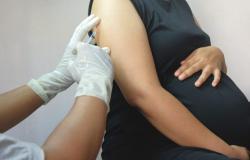Cisplatin is one of the most effective and powerful anticancer molecules. In tumors, it acts by preventing the replication of the DNA of cancer cells, which leads to their death. In a recent article written for the 50th anniversary of the discovery of these properties [1]French researchers from the CNRS spoke of a drug which has “revolutionized the treatment of many types of cancer” and described its use as “ unshakable “. “ In the treatment of bladder or testicular cancer, it is irreplaceable », also reports the Dr Claire Gervais, oncologist at the Georges-Pompidou European Hospital (Paris). But it is also used for that of the cervix, the lung, the ENT sphere…
Its marketing authorization dates from 1983 in France. In 40 years, it has therefore had time to become democratized. Today, it is the most prescribed chemotherapy. According to a recent study published by a team of American researchers [2]in 2020, just over a million people with cancer received cisplatin as part of their treatment.
In 2019, there were 441,000 cases of hearing loss due to cisplatin, or 43% of people who received this treatment.
A range of side effects
Problem, and not the least, cisplatin displays a fairly significant table of side effects. Some temporary (vomiting, nausea, etc.), others lasting or even irreversible. Among the latter, hearing disorders. In the publication mentioned above, the American team compiled data regarding ototoxic compounds. According to these figures, in 2019 there were 441,000 cases of hearing loss due to cisplatin, or 43% of people who received this treatment. This molecule is also used against pediatric cancers, and children are therefore particularly exposed to this risk, which can cause delays in the development of communication. Another recent study [3] estimates that cisplatin increases the risk of developing a hearing disorder by five: tinnitus, hearing loss (particularly in high frequencies) and reduced comprehension.
Multiple damage
And for good reason, cisplatin affects the ear in multiple ways. First, it succeeds in crossing the blood-perilymph barrier. To do this, it passes through the stria vascularis, which damages the ion channels (NKCC1, CTR1 or OCT2). As a result, the endocochlear potential, essential for the proper functioning of hearing function, is altered. In passing, cisplatin deforms the stria vascularis by modifying the expression of genes encoding the junction proteins of the marginal cells, and deteriorates the latter. Their degradation leads to the release of disintegration products, which bind to hair cell receptors, causing a chain reaction, one of the consequences of which is a phenomenon of inflammation.
Cisplatin also penetrates hair cells. It can then cause a wide range of damage, including the production of reactive oxygen derivatives. This causes oxidative stress which can lead to the death of these cells (apoptosis).
One medication
This multiple harmful action of cisplatin makes the discovery of a treatment, preventive or curative, very complex. Moreover, there is currently only one drug on the market, and even then, with restricted access. And this in several ways. Indeed, in September 2022, the FDA, which regulates the American drug market, authorized the use of Pedmark (developed by Fennec Pharmaceuticals), but only for children treated for non-metastasized solid tumors. In June 2023, it was the turn of the European Commission to authorize the entry into the market of this drug (under the name Pedmarqsi), with the same restrictions, leaving each member country to legislate. In France, Pedmarqsi is subject to compassionate access authorization (AAC), a type of accelerated procedure for certain medicines. which satisfactorily respond to an unmet therapeutic need “. But this exemption only covers children with operable hepatoblastoma (liver cancer).
Molecules in pipelines
However, other molecules are in the pipelines of pharmaceutical companies. And the strategies are multiple. First, there are existing medications, used for other indications, that could prove effective in cisplatin-related ototoxicity. This is the case of sodium thiosulfate (of which Pedmark is a derivative), which binds to cisplatin, preventing it from attaching to other proteins. The problem is that this inactivates cisplatin and so sodium thiosulfate must be administered after cisplatin treatment.
Another drug which could be the subject of therapeutic reorientation: cimetidine. It is an antagonist of the OCT2 channel, through which cisplatin can cross the stria vascularis or enter hair cells. Clinical trials (phase 1b) are underway, but this strategy could prove problematic because blocking these channels can also affect the functioning of the ear, and therefore hearing.
Other clinical trials are in more advanced stages for atorvastatin (phases 2 and 3), a drug believed to have antioxidant and anti-inflammatory effects. Finally, N-acetylcysteine (NAC) is an amino acid that stimulates the synthesis of glutathione, an antioxidant, which could therefore be effective against oxidative stress.
Pharma companies in the ranks
Apart from these drugs already on the market for indications other than ototoxicity, several molecules are being studied. One of them is SENS-401, developed by Sensorion. Initially studied in the context of sudden deafness – a project abandoned following unsatisfactory results in phase 2 – the small flagship molecule of the French biotech is today in a phase 2a clinical trial (called Notoxis), for the treatment against ototoxicity linked to cisplatin (it is also the subject of a clinical trial in partnership with Cochlear to preserve residual hearing during cochlear implantation). This molecule – arazasestron – is a calcineurin antagonist, which activates an anti-inflammatory pathway. “ If we inhibit the activity of calcineurin, we have better control of inflammation “, describe Géraldine Honnet, medical director at Sensorion. Recruitment for this clinical trial, in France and Israel, is underway. But it is not easy, reports Dr Claire Gervais, who is participating in the trial: “ Patients are well informed about possible toxicities related to cisplatin (read the box), but there are few volunteers to participate in clinical trials for the prevention of these toxicities. They are probably preoccupied with other issues, and they are perhaps less focused on toxicities because they are not yet present. »
Also read | has-¶ Promising results for Sensorion’s SENS-401
Sensorion will include 58 adult patients, who will be divided into two groups. One, control, will not receive SENS-401, the other will receive a dose one week before treatment with cisplatin, then throughout the chemotherapy cycles and up to one month after the last cycle, i.e. 11 weeks of treatment. Patients’ ototoxicity and hearing will be measured regularly, using audiometry in silence and in noise. The preliminary results will be communicated during the WCA (one more reason to go there!).
The company Decibel, recently acquired by Regeneron, also has a molecule in its pipeline: DB-020, which is also a formulation of sodium thiosulfate. The results of a phase 1 clinical trial in face and neck cancers will be presented at the American Society of Oncology Congress in early June 2024.
The company Sound Pharmaceuticals is also looking for a treatment. Its candidate: SPI-1005, ebselen, with anti-inflammatory, antioxidant and cytoprotective actions. But the trial is currently on hold, with the company focusing on ototoxicity linked to antibiotics.
Also read | has-¶ MED-EL and Sound Pharma collaborate to preserve residual hearing
In February 2024, Acousia Therapeutics, a German company, announced that it had launched the recruitment of patients for a phase 2 clinical trial (named Prohear), in order to test its candidate ACOU085 on 40 young patients (18-45 years old) suffering from cancers. testicles. This molecule is an activator of a channel (KCNQ4) which regulates potassium currents in outer hair cells. Patients in the test group will receive the drug as a transtympanic injection just before the first three cycles of chemotherapy.
The final results of these clinical trials are not expected for several months and even if the preclinical studies are encouraging, many molecules never pass the phase 2 stage. In addition, most of the compounds tested mainly attack the damage caused by cisplatin (inflammation, oxidative stress, etc.). However, as an NIH team showed in 2017, “ cisplatin is retained indefinitely in the cochlea after chemotherapy » [4]. The team indicated that the most judicious strategy was therefore to prevent cisplatin from passing through the stria vascularis… The arrival of immunotherapy to treat more and more cancers could also help to resolve the problem.
Evaluation and monitoring of patients treated with cisplatin
“ Patients are systematically warned of the ototoxic effect of cisplatin, as well as the effects of other toxicities (renal, neuropathy, etc.), during the consultation. », Reports Dr Claire Gervais, oncologist at the Georges-Pompidou European Hospital (Paris). Hearing is also the subject of particular attention: “We look for possible hearing loss because this may be a criterion for contraindication to treatment with cisplatin. Patients who have severe hearing loss are ineligible for cisplatin. »
At the Georges-Pompidou European Hospital, the assessment is carried out during the pre-therapeutic assessment, using audiometry carried out by hearing aid specialists, for people at risk (whose age is over 40-45 years). In all cases, even if healthcare personnel prefer to avoid potential hearing loss for patients, the benefit-risk balance is always considered. If the deafness is too severe, and there is a risk that treatment with cisplatin will degrade it too much, moving it to grade 3 of the CTCAE* classification, then an alternative will be offered to the patient.
Particular attention is also paid to monitoring the patient’s hearing. An audiogram is performed after the third cycle of chemotherapy and subsequently, depending on the patient’s complaint. “We see relatively few complaints from patients,” reports the Parisian oncologist. On the other hand, they often complain of tinnitus, but these complaints tend to be less severe after chemotherapy. »
*The CTCAE classification (for Common Terminology Criteria for Adverse Events) is divided into 5 grades (grade 1 being the mildest), depending on the severity of the adverse event. Grade 3 corresponds to a severe event but not immediately life-threatening.






